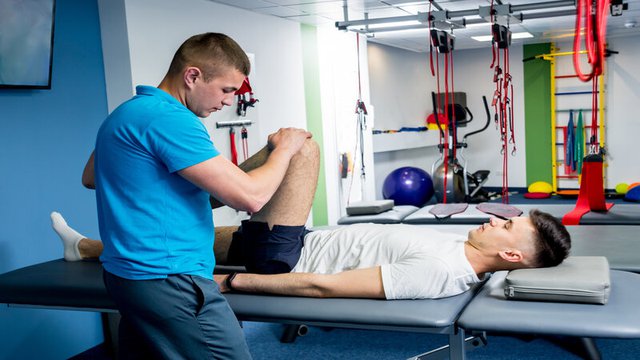

Elite athletes face an extremely competitive world, and with more and more tournaments, matches, and events, many push themselves to the limit to surpass keep ahead or reach their maximum level. This level of demand also brings with it enormous physical pressure that can become a health risk, causing pain or even injuries that, when not properly treated, can lead to the athlete's reorientation towards another sport or the abandonment of sport altogether.
To avoid such problems, physical therapy in sport is an essential tool to help athletes recover as quickly as possible and avoid relapses. As a result, sports physiotherapy is currently one of the areas of greatest professional growth and impact within the sport sector. This means that studying a Physiotherapy degree, master's degree in Sports Physiotherapy, or a Sports Physiotherapy and AI Course will open the door to an exciting world of work.
Definition of physical therapy in sport
Physical therapy in sport is a speciality of physiotherapy. It can be applied to elite or amateur athletes. It has several objectives, but the main ones are the following:
- Prevent injuries
- Improve quality of life
- Shortening recovery time from injury
- Adapt the body to training
How has sports physiotherapy evolved throughout history?
The history of physical therapy and rehabilitation is intertwined with that of medicine. In fact, the earliest example of treatments such as hydrotherapy, massage therapy and exercise can be traced back to countries such as India and China thousands of years ago.
However, the real practitioners of physiotherapy were trained in ancient Greece. In 460 BC, Hippocrates, traditionally regarded as the father of medicine, began recommending massage and manual therapies to treat certain conditions.
Later, following in the footsteps of those early Greek physicians, the Royal Central Gymnastics Institute was founded in Stockholm in the early 19th century by Per Henrik Ling, considered the father of Swedish gymnastics. This gymnastics instructor, and specialist in human anatomy and physiology, strove to remedy the many injuries suffered by gymnasts and specialised in massage, manipulation and exercise.
Subsequently, his techniques and exercises spread throughout Europe and America. However, until the Second World War, most physical therapy was carried out in hospitals to help patients recovering from surgery, injury or other pathologies.
Specialised physiotherapy clinics were founded during the war to provide treatment for the thousands of wounded soldiers who needed rehabilitation after hospital stays. This transition to outpatient care contributed to the growing popularity of physiotherapy.
In the late 1950s, physiotherapists began treating patients outside of hospitals. From that time onwards, the physiotherapy profession increasingly diversified, giving rise to new areas of specialisation, such as physical therapy and sports rehabilitation.
How is physical therapy used in sport and why is it so important?
- Treating sports injuries: Physical therapy in sport is mainly focused on treating injuries that occur during sport, from muscle overloads or tears to joint problems. Through different techniques, such as massages, controlled mobilisations or electrotherapy, the sports physiotherapist tries to help the athlete regain mobility and functionality. Their work is essential to promote faster recovery and relieve pain. In fact, in many cases, the physiotherapist can neutralise pain in the first few sessions, depending on the type of injury.
- Preventing sports injuries: The training regime followed by athletes is often very intense, which can lead to muscle tension, either due to overload or inadequate posture during exercise. Sports physical therapy helps to restore normal joint mobility, relax muscle tension and strengthen muscles, which prevents the problem from worsening and eventually leading to injury.
- Muscle re-education: Many sports injuries are caused by poor posture during exercise. Physical therapy in sport helps athletes to optimise their movements and better control their muscles. In this case, the objective is to achieve a conscious activation of the muscle groups necessary to perform each movement, adopting the most appropriate postures thanks to the formation of a coordination engram in the central nervous system.
- Avoiding relapses: The physiotherapist not only knows in depth the locomotor and muscular system, but also the biomechanics of the athlete and his weak points, so he can recommend different exercises and some postures to train in a safer way and avoid re-injury. In fact, the physiotherapist can be a key player in improving the athlete's mobility efficiency, stability and strength.
- Improving sporting performance: Physical therapy in sport also helps to improve the athlete's coordination, balance and proprioception. The physiotherapist corrects positional or joint alignment problems that may affect performance and stimulates oxygenation of target tissues to speed recovery after exercise.
As you can see, the sports physio plays a key role in the life of an athlete. There are of course other aspects. The role of a sports psychologist is vital, while the nutritionist coach in sport also plays a central role in helping the athlete achieve their goals. These figures work together to ensure the individual or team are best prepared to succeed.
Article published on Jan. 13, 2023